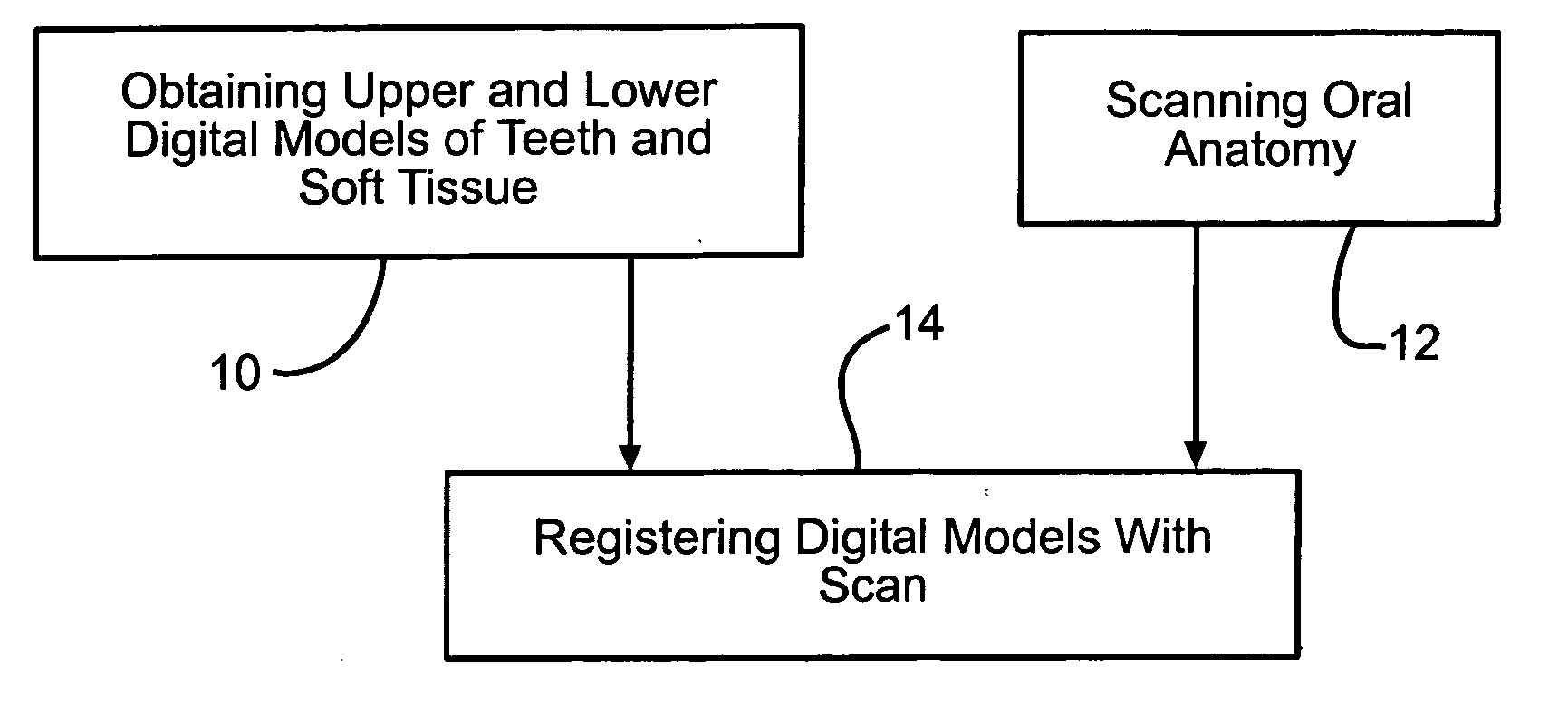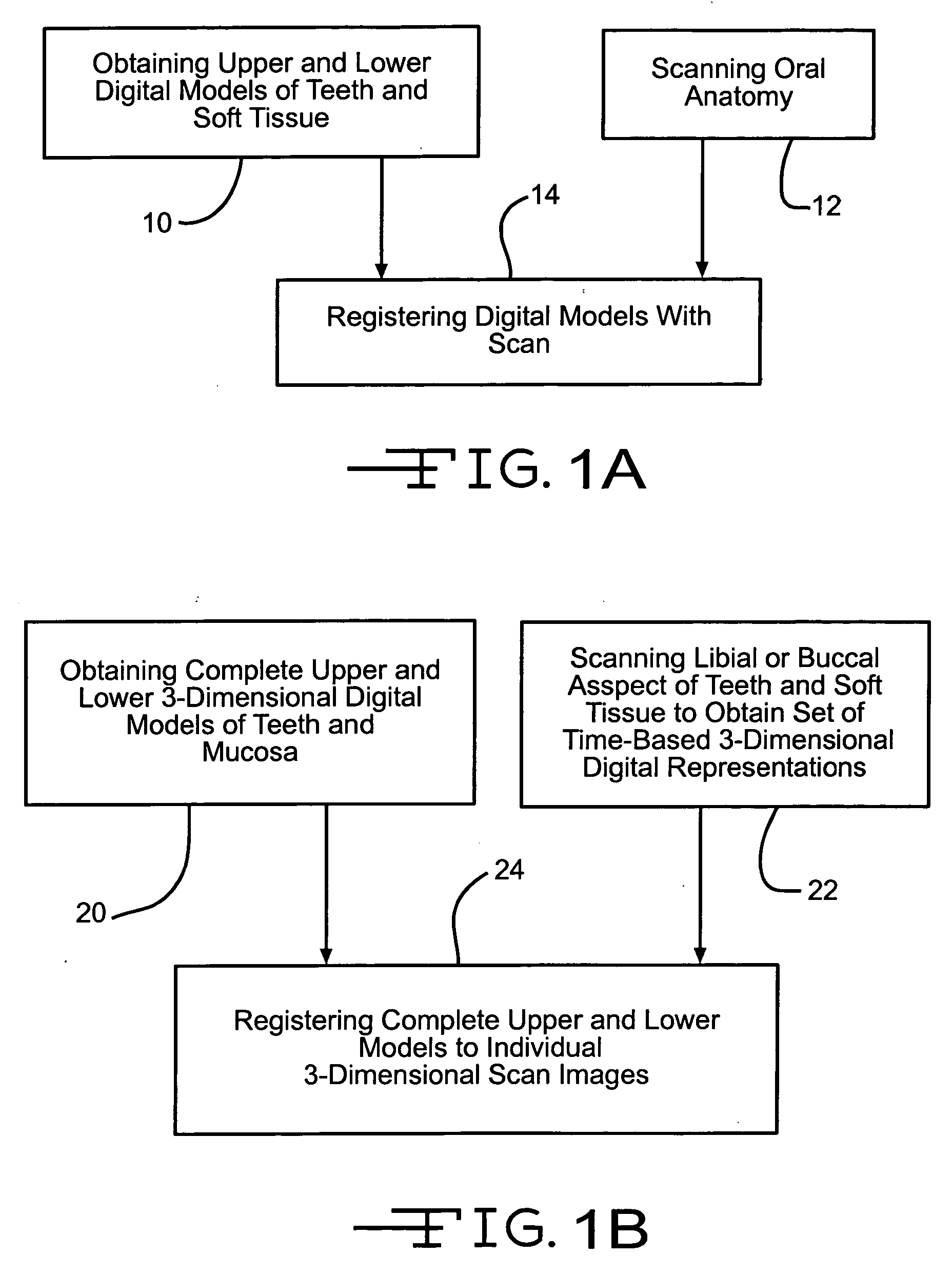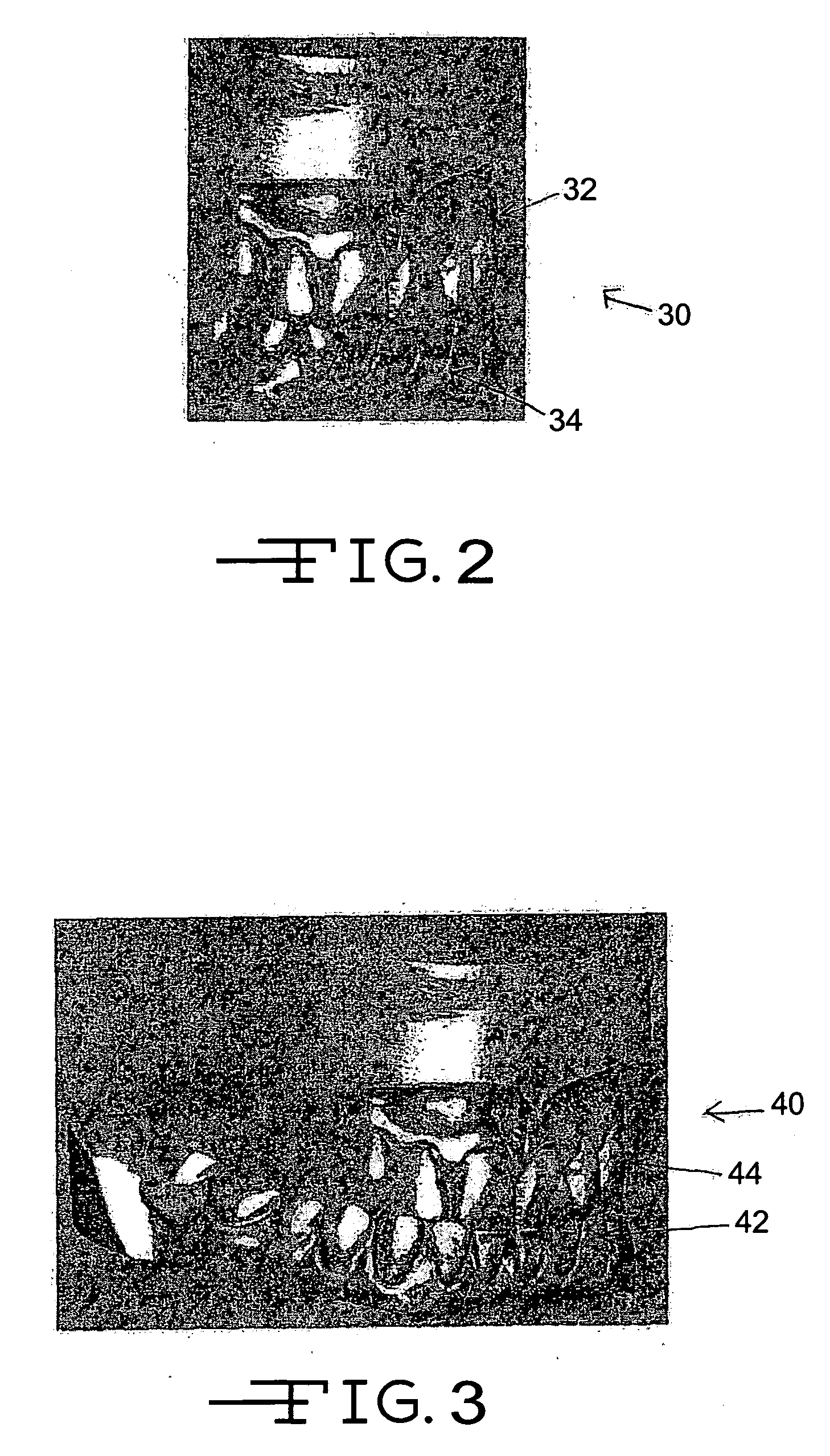Four dimensional modeling of jaw and tooth dynamics
a four-dimensional modeling and tooth technology, applied in the field of four-dimensional modeling of jaw and tooth dynamics, can solve the problem of using contrasting boundaries to seize oral impressions and digitally digitize them
- Summary
- Abstract
- Description
- Claims
- Application Information
AI Technical Summary
Benefits of technology
Problems solved by technology
Method used
Image
Examples
example 1
Determining Centric Axis
[0036] Serial scan data is taken while a patient's jaw is maintained and moved in centric relation. The mandible is positioned and maintained in its terminal (uppermost) axis position and is slowly moved while the labial surfaces of the teeth are scanned. Scanning is performed prior to tooth contact. Keeping the upper arch fixed, the 3-dimensional location of a theoretical hinge axis is readily determined by mathematically fitting an arc to the data produced from this jaw movement. The arc of closure is analyzed to produce a theoretical hinge axis in three dimensions. Since all data is 3-dimensional, a 3-dimensional vertical line of closure may be determined. In practice, a set of 3-dimensional instantaneous center of rotation values (ICR) may be determined.
example 2
Determining Eminence Geometry
[0037] The method of this invention can be used to determine the 3-dimensional geometry of the temporomandibular joint eminence. Since the mandible provides a rigid connection between the lower dentition and the condyle, the 3-dimensional path of two remote points mathematically related to the lower arch is readily determined. These points lie on the center of rotation of each condyle and are separated by an intercondylar distance. These two condylar marker points are referenced to the lower arch. In a preferred embodiment, two such points on the centric axis are defined to reflect left and right side condylar motion.
[0038] The approximate location of the center of rotation of the condyle and intercondylar distance may be approximated from standard 2-dimensional lateral and frontal cephalometric images, or precisely determined using 3-dimensional CT methods. From a lateral view, a centric rotation point on the condyle may be identified and related to l...
example 3
Custom Condylar Inserts
[0041] Knowledge of the individual condylar geometries may be used to fabricate patient-specific condylar inserts for dental articulators. The inserts are shaped to represent the actual geometry of the left and right side articular eminence of the temporal bone for a specific patient. Once the shape is determined, insert may be produced using a machine center. The custom inserts may also be produced by rapid prototyping methods. The inserts are placed in a dental articulator to assist with the laboratory fabrication of appliances and prostheses.
[0042] In this way, a relatively simple dental articulator fitted with custom condylar inserts can be used to duplicate the actual 3-dimensional excursions followed by path of the condyle from the fossa along the articular eminence. The insert would have means for attaching to an articulator. Current jaw tracking methods may also be worked-up as 3-dimensional models to produce custom condylar inserts.
PUM
 Login to View More
Login to View More Abstract
Description
Claims
Application Information
 Login to View More
Login to View More - R&D
- Intellectual Property
- Life Sciences
- Materials
- Tech Scout
- Unparalleled Data Quality
- Higher Quality Content
- 60% Fewer Hallucinations
Browse by: Latest US Patents, China's latest patents, Technical Efficacy Thesaurus, Application Domain, Technology Topic, Popular Technical Reports.
© 2025 PatSnap. All rights reserved.Legal|Privacy policy|Modern Slavery Act Transparency Statement|Sitemap|About US| Contact US: help@patsnap.com



